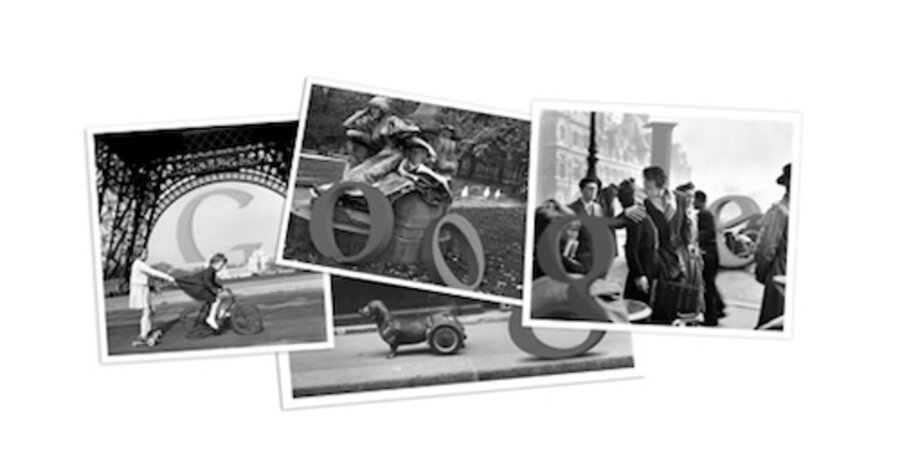Robert Doisneau, an artist of the Parisian streets, honored today by Google
Loading...
The Google doodle Saturday depicts a quartet of photographs by the French artist Robert Doisneau, including his most famous work, "Kiss by the Hotel de Ville," which was snapped in 1950. So who was Robert Doisneau, exactly?
Only one of the most recognizable stylists in the annals of modern photography – a Paris-born flâneur who wandered the streets of his home city with his trademark Leica in hand, collecting images of the local street life.
Doisneau, who would have been 100 today, grew up in a suburb of Paris, the son of a plumber. When his parents passed away, Doisneau went to live with an aunt. He studied lithography, but preferred the camera, and at the age of 20, he sold his first photo essay to a local magazine called Excelsior.
Through the '30s, he did work for Renault, the French auto giant; when he was fired (apparently for being chronically late), he struck out on his own. During World War II, he was conscripted in the army, and later helped forge passports for the Resistance. In the 1940s and 1950s, he settled in the perambulatory rhythm that yielded iconic images like the ones above.
"Doisneau was fascinated by the Parisians who lived and worked around him," reads one 1991 Doisneau obituary. "He pictured them in their own inimitable cityscape, constructing a narrative which paid homage to the ordinary. Through Doisneau's eyes, Paris became a magic circus of occasion and event: an impromptu game of football becomes a decorous exercise in acrobatics, a fallen horse in the road the centre of an accidental carnival."
Of course, it is "Kiss by the Hotel De Ville" that remains forever linked to Doisneau – an image of two lip-locked lovers that appears to have been captured candidly. (In the background, commuters swing through the afternoon light.) But the photo was not serendipitous. Toward the end of his life, Doisneau admitted that the photo was posed, and that two "lovers" were actually models.
For more tech news, follow us on Twitter @venturenaut. And don’t forget to sign up for the weekly BizTech newsletter.







